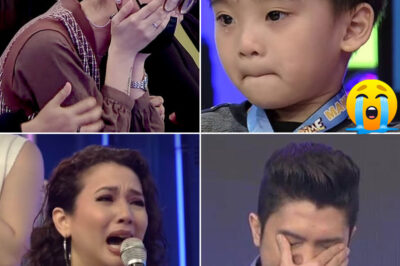The Silent Farewell: A Mother’s Final Rest Without Her Children
She was laid to rest in silence — without her three beloved children beside her. No songs. No goodbyes. Just the earth swallowing the pain of a mother gone too soon. But why weren’t her babies buried with her? The answer will break you — and change how you see grief forever.
In a world where family bonds are cherished, the story of this mother’s final moments challenges our understanding of love, loss, and the complexities of grief. Her passing was met with the quiet sorrow of a community that knew her well, yet her children’s absence at her side raised questions that lingered long after the ceremony.

The absence of her children at her burial was not due to estrangement or neglect. Instead, it was a reflection of a deeper, more painful reality. In many cultures, the loss of a child is a grief so profound that it often goes unacknowledged, leaving parents to mourn in isolation. This phenomenon, known as disenfranchised grief, occurs when society fails to recognize the legitimacy of certain losses, such as the death of a child, leading to a lack of support for the bereaved .
For this mother, the pain of losing her children was compounded by the societal tendency to overlook such profound grief. The absence of her children at her side was not a choice but a consequence of a system that failed to acknowledge her loss. It serves as a stark reminder of the importance of recognizing and supporting all forms of grief, especially those that society often chooses to ignore.
Her story is a testament to the resilience of the human spirit and the enduring love of a mother. It calls upon us to reflect on how we perceive and respond to grief, urging us to offer compassion and understanding to those who suffer in silence. The absence of her children at her burial is not just a personal tragedy but a societal failure to honor the depth of a mother’s love and loss.
As we remember her, let us also remember the countless others who grieve in silence, their pain unseen and unacknowledged. May we strive to create a world where all forms of grief are recognized and supported, where no one has to mourn alone.
In the end, her story is not just about a mother and her children. It is about all of us — our capacity for empathy, our willingness to confront uncomfortable truths, and our commitment to supporting one another through life’s most profound losses.
News
Caridad Sanchez’s daughter shares heartbreaking revelation of actress’ dementia (an)
Caridad Sanchez’s daughter shares heartbreaking revelation of actress’ dementia MANILA — A long goodbye. Cathy Babao, daughter of veteran actress…
Cherry Pie Picache breaks her silence with a fierce declaration: “No more lies, no more fear.” Her revelations about Edu Manzano are shaking the industry to its core. Fans are stunned, whispers turn to roars, and questions flood in—what dark secrets were hidden all this time? The truth is finally breaking free, and it’s more explosive than anyone imagined! (an)
Manila — In a revelation that shocked both fans and the entertainment world, veteran actress Cherry Pie Picache has finally…
🔥 LIVE TV BOMBSHELL! Vic Sotto CONFIRMS Maine Mendoza’s pregnancy — but jaws dropped when Jose Manalo suddenly stood up, face pale, voice trembling: “Hindi pwede ‘to…” (an)
Fans of the popular actress and TV host Maine Mendoza are thrilled and emotional after veteran comedian Jose Manalo was…
😢 Cameras kept rolling… but hearts were breaking behind the scenes. (an)
An unforgettable and emotional moment unfolded on the popular noontime show It’s Showtime, leaving everyone in awe and wiping away tears…
😭 “Para sa’yo ‘to, Papa…” — those were the words young singer Argus whispered before singing on live TV. (an)
“A Song for Dad”: Vhong Navarro, Karylle Brought to Tears by Young Singer Argus’ Emotional Tribute on Live TV In…
🎥 “Matagal na kitang gustong tanungin, pero natatakot ako…” — Kim Chiu’s voice cracked as she faced Paulo Avelino in front of rolling cameras. (an)
In a turn of events no one expected, what was meant to be a joyful celebration quickly turned into an…
End of content
No more pages to load










